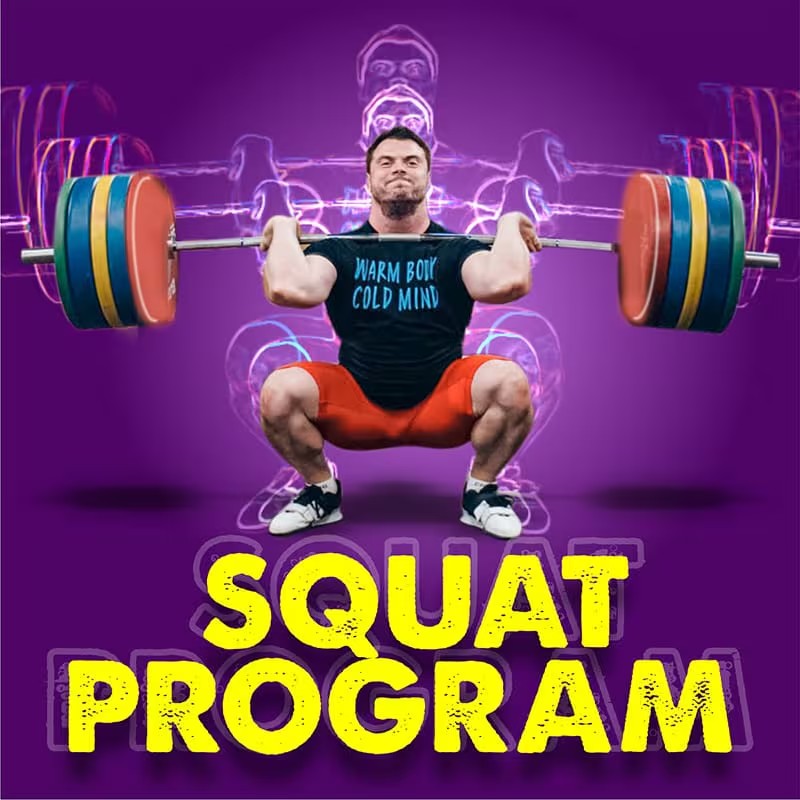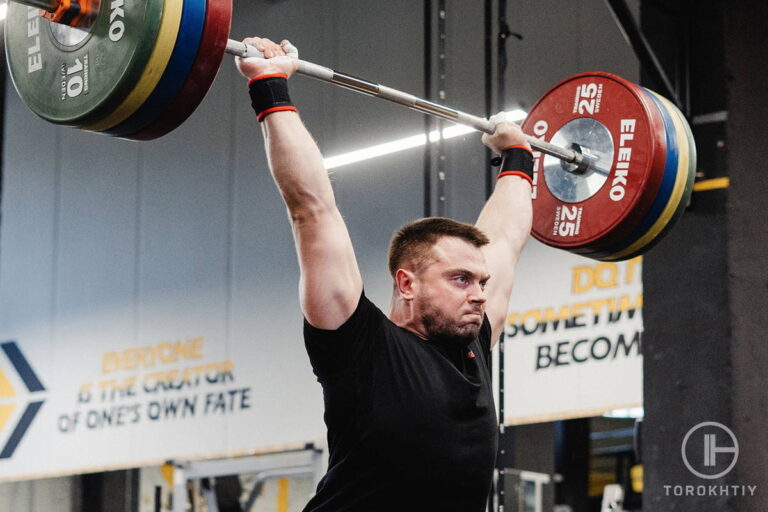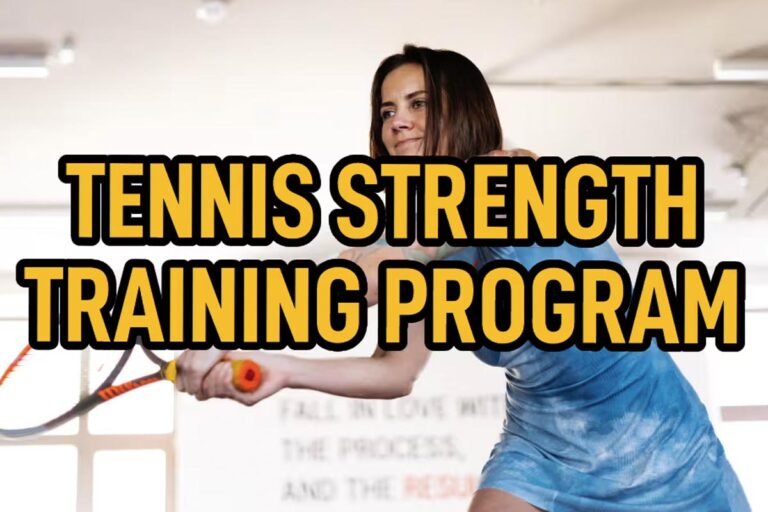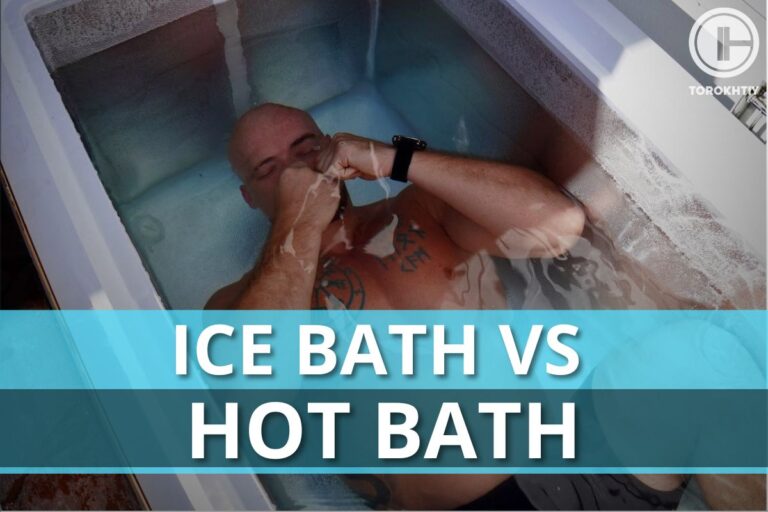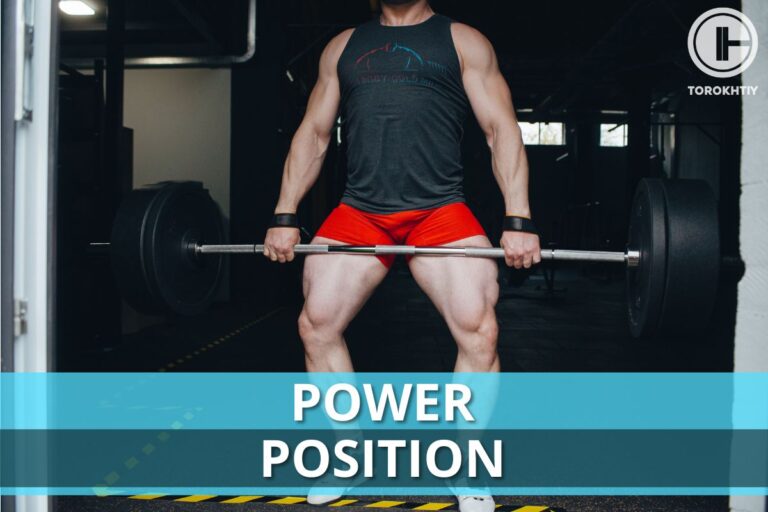6-Week Squat Program
It’s a fundamental truth in the athletic world: powerful legs lead to enhanced performance. Whether you’re sprinting on the track, leaping for a slam dunk, cycling uphill, or driving forward in rugby, strong legs are crucial. They form the base of almost every athletic movement, transferring power from the ground up. Yet, while many athletes invest time in building their upper body, the true potential lies in maximizing lower body strength.
This article will guide you through a specialized 6-week squat program that emphasizes both hypertrophy and explosiveness.
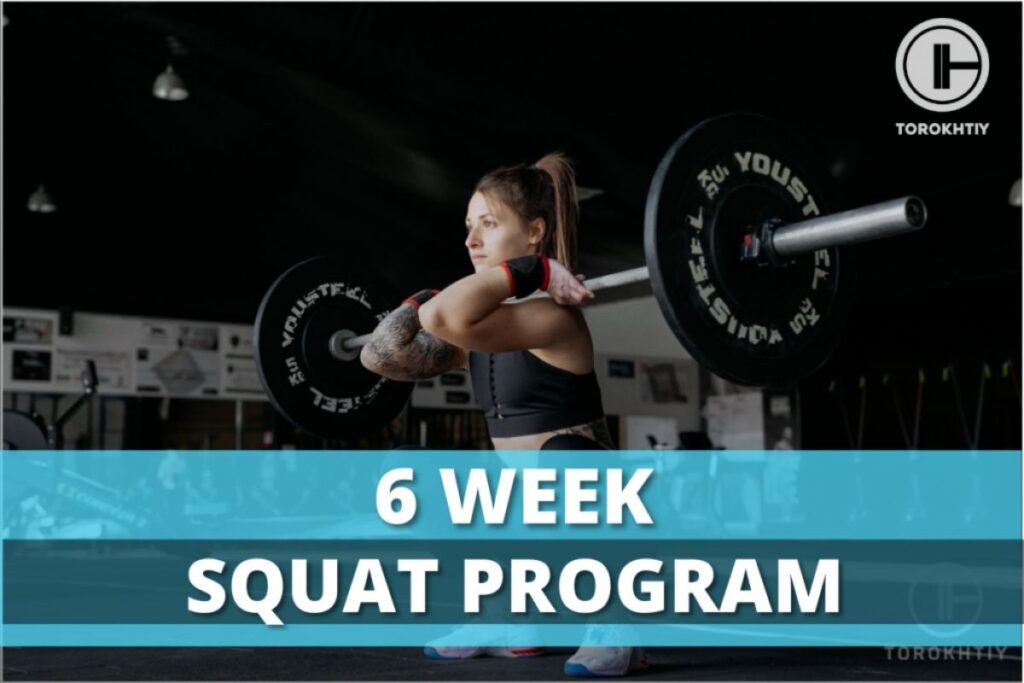
How to read Olympic weightlifting training plan load
In Olympic weightlifting and strength training there is a standard form of writing planned load. Coach give a prescribtion that athletes need to do on the each training in specific way.
Let`s talke a look on certain example:
It means that in this specific exercise – Back Squat, athlete will do for
1 set for 4 reps on 50%, 3 sets for 4 reps on 65%, 1 set for 4 reps on 75%,
% – counts from actual 1 RM, means that if your current 1 RM 100 kg (220 lbs), athlete work 1 set for 4 reps on 50% – 50 kg (110 lbs), 3 sets for 4 reps on 65% – 65 kg (143 lbs), 1 set for 4 reps on 75% – 75 kg (165 lbs)
Week 1 template
Day 1: Hypertrophy Focus
Back Squats: 4 sets x 8 reps @ 70-75% 1RM
Build muscle mass in the quads, hamstrings, and glutes.
Bulgarian Split Squats: 3 sets x 10 reps per leg
Enhance unilateral strength and balance.
Romanian Deadlifts: 3 sets x 8 reps
Target the hamstrings and glutes, complementing the quad-focused squats.
Leg Press: 3 sets x 10 reps
Compound movement to further stimulate leg hypertrophy.
🔻12 Week Squat Program by Oleksiy Torokhtiy
Do you want to double your squat strength? In just 12 weeks, you’ll be able to boost your squat results.
This program transforms any ordinary squat into a powerful athletic movement.
What’s included:
- 12 weeks of squat programming;
- Effective combination of sets, reps, and weights;
- Fully designed and coached by Oleksiy Torokhtiy;
- Over 60+ movements, banded work, and weight training;
- Accessory work for core, joint stability and injury prevention;
- Max out on back squat and front squat at the end.
Start now and boost your squat results!
Day 2: Explosiveness Focus
Box Jumps: 4 sets x 6 reps
Improve fast-twitch muscle response and power generation.
Plyometric Lunges: 3 sets x 8 reps per leg
Boost explosive power and agility.
Speed Squats: 4 sets x 5 reps @ 50% 1RM with band resistance
Enhance acceleration strength.
Depth Jumps: 3 sets x 6 reps
Develop reactive strength and improve neural pathways.
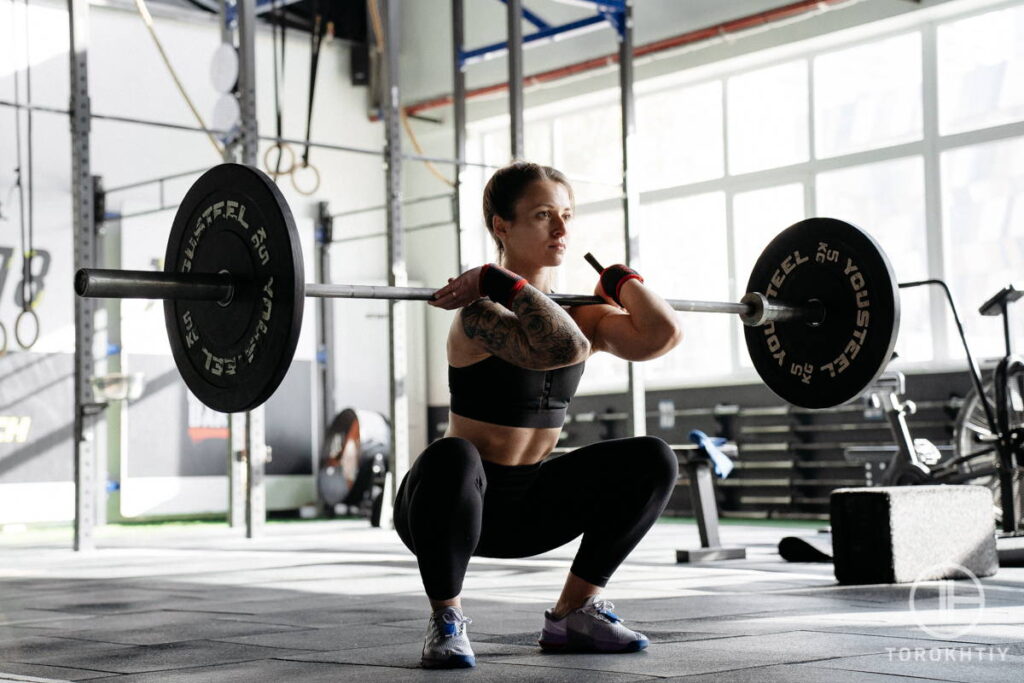
Day 3: Hypertrophy Focus
Front Squats: 4 sets x 8 reps
Engage quads more directly and bolster core strength.
Hack Squats: 3 sets x 8 reps
Emphasize quad development.
Good Mornings: 3 sets x 10 reps
Target the posterior chain, especially the hamstrings.
Walking Lunges: 3 sets x 12 reps per leg
Comprehensive leg engagement with a focus on hypertrophy.
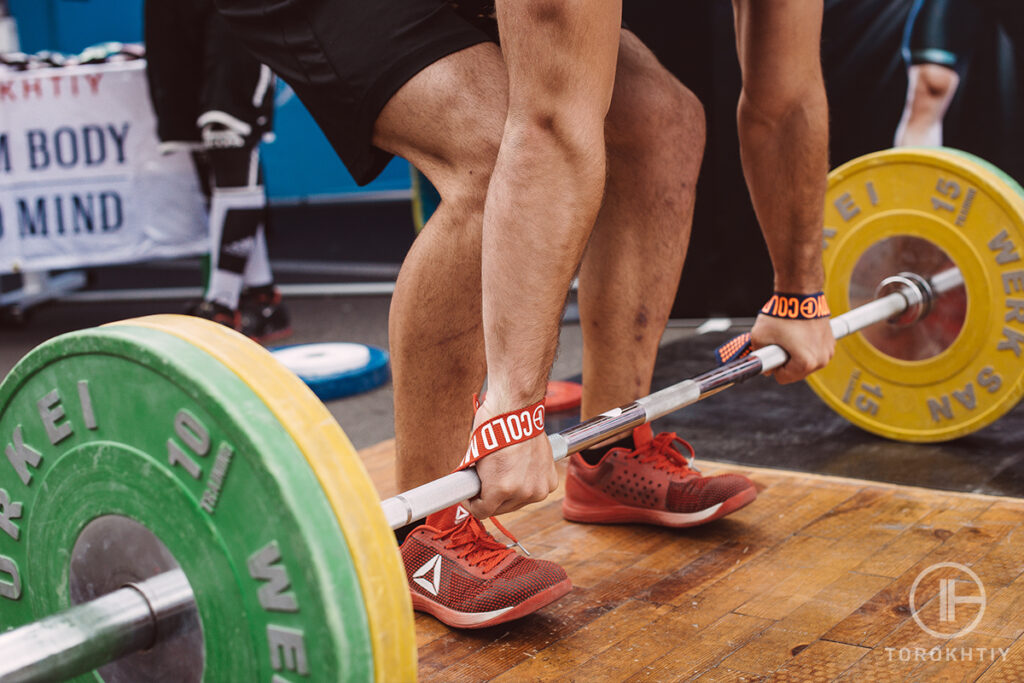
Day 4: Explosiveness Focus
Kettlebell Swings: 4 sets x 8 reps
Develop hip drive and posterior chain explosiveness.
Jump Squats: 4 sets x 6 reps
Enhance vertical jump and boost power output.
Olympic Barbell Thrusters: 3 sets x 8 reps
Compound movement for power generation throughout the entire body.
Box Jumps: 3 sets of 8 reps
Improve explosiveness and power.
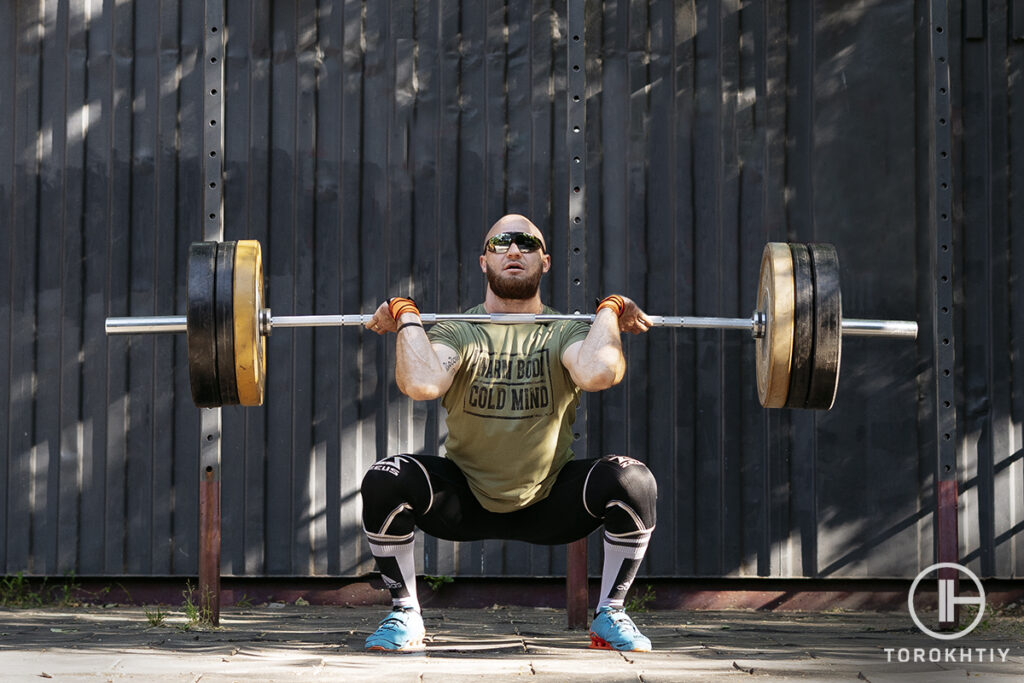
Recommendations for Further Programming
After dedicating 6 weeks to this rigorous squat program, athletes are bound to witness marked improvements in leg size, strength, and explosiveness. To harness this momentum and continue on an upward trajectory, here are some detailed strategies:
1. Periodization
A fluid approach is vital. Alternating focus every 2 weeks between hypertrophy, strength, and explosiveness ensures muscles remain in a state of adaptation. For instance:
Hypertrophy Phase: Concentrate on volume with moderate weights.
Strength Phase: Lower rep ranges with heavier loads, possibly 80-90% of 1RM.
Explosiveness Phase: Plyometric exercises and lifts at lighter weights with rapid movement.
2. Progressive Overload
Challenge is the mother of growth. Each week, aim for a modest weight increment of 2-3%. This not only stimulates the muscles but does so in a manner that minimizes injury risk.
3. Variation
Introduce new squat variations or change the stance. Examples include sumo squats, single-leg squats, or goblet squats. This ensures that muscles don’t get too accustomed to a particular movement, leading to plateaus.
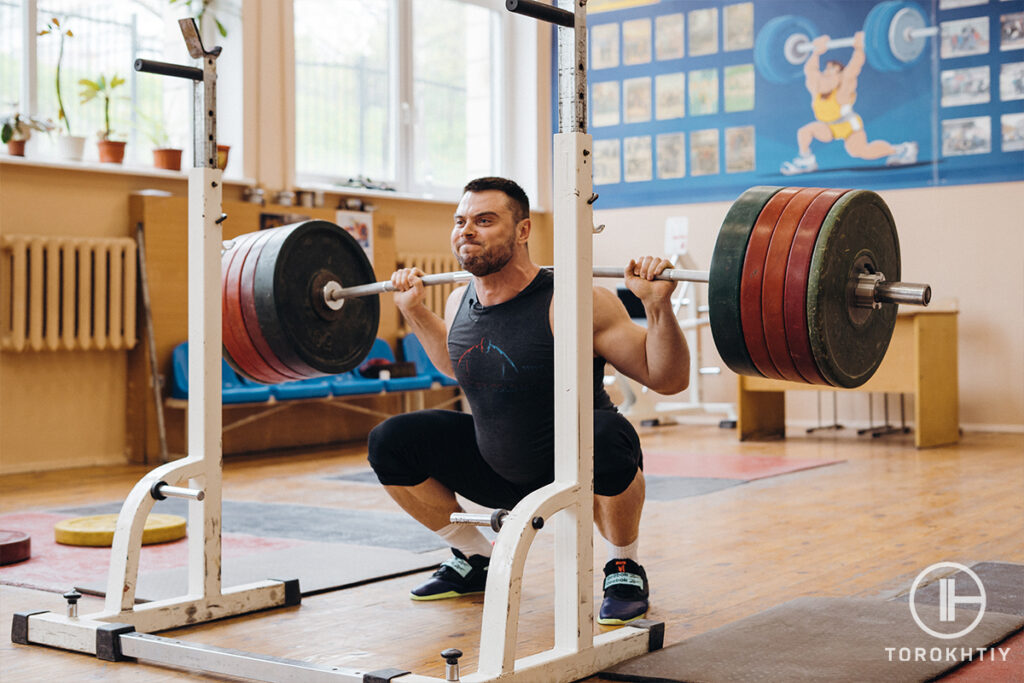
4. Incorporate Isometrics
These are exercises where the muscle doesn’t noticeably change length and the affected joint doesn’t move. Wall sits are a classic example, but also consider plank leg lifts or single-leg bridge holds. They can amplify strength, stability, and endurance.
5. Accessory Work
Don’t neglect complementary exercises that fortify the squat. Hamstring curls, calf raises, and glute bridges can optimize squat performance and prevent imbalances.
6. Recovery
It’s during rest that muscles repair and grow. Beyond the conventional rest days:
Foam Rolling: Alleviate muscle tightness and improve blood circulation.
Stretching: Regular static and dynamic stretching can enhance mobility and reduce injury risks.
Yoga: Incorporating yoga sessions can be hugely beneficial for flexibility, balance, and even mental fortitude.
Massage: Consider periodic sports massages to release tension and aid muscle recovery.
7. Nutrition & Hydration
To support the increased demand on muscles, ensure optimal protein intake, balanced nutrition, and adequate hydration. This can significantly affect recovery and growth.

Conclusion
Building powerful legs requires a balance of hypertrophy and explosive training. By dedicating 6 weeks to a structured squat program, athletes can lay down a foundation that will significantly benefit their performance in any sport.
You can find a full and detailed squat plan – here. Beyond strength and power, this program also aids in injury prevention and promotes overall physical longevity. Embrace the journey of leg training, and watch how it transforms your athletic prowess.
Also Read:
Why Trust Us?
With over 20 years in Olympic Weightlifting, our team does its best to provide the audience with ultimate support and meet the needs and requirements of advanced athletes and professional lifters, as well as people who strive to open new opportunities and develop their physical capabilities with us.
By trusting the recommendations of our certified experts in coaching, nutrition, dietology, and sports training programming, as well as scientific consultants, and physiotherapists, we provide you with thorough, well-considered, and scientifically proven content. All the information given in the articles concerning workout programming, separate exercises, and athletic performance, in general, is based on verified data. We ensure that you can rely on our professionals’ pieces of advice and recommendations that can be treated as personalized ones which will benefit you and fully meet your needs.
The product testing process is described in more detail here
Author: Sergii Putsov
Head of Sport Science, PhD
Best Results: Snatch – 165 kg,
C&J – 200 kg
Sergii Putsov, Ph.D., is a former professional weightlifter and National team member, achieving multiple medals in the 94 kg weight category at national competitions. With a Master’s degree in “Olympic & Professional Sport Training” and a Sport Science Ph.D. from the International Olympic Academy, Greece, Sergii now leads as the Head of Sport Science. He specializes in designing training programs, writing insightful blog articles, providing live commentary at international weightlifting events, and conducting educational seminars worldwide alongside Olympic weightlifting expert Oleksiy Torokhtiy.

